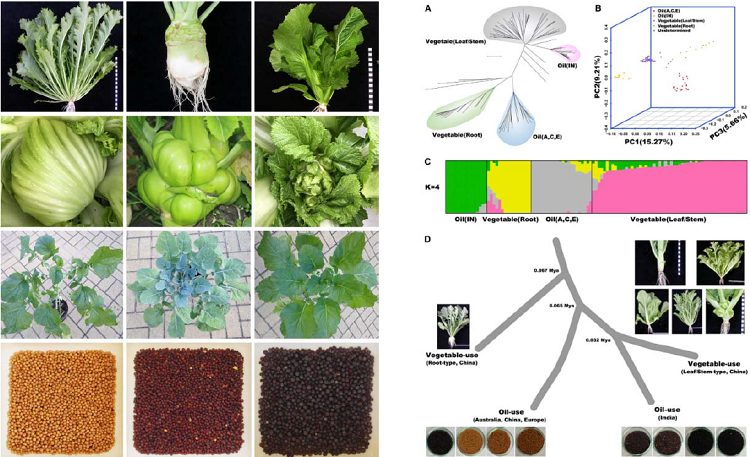The current volume of Molecular Plant recently published a scientific article entitled Chinese root-type mustard provides phylogenomic insights into the evolution of the multi-use diversified allopolyploid Brassica juncea by Prof. Zhang Mingfang group from Institute of Vegetable, College of Agriculture & Biotechnology, Zhejiang University.
Allopolyploid mustard (Brassica junceaL.) is an important part of the U’s triangle model of Brassica comprising vegetable, oilseed and condiment crops. It has been controversial regarding the origin and evolution of B. juncea. Vavilov (1949) proposed that Afghanistan and its adjoining regions were the primary center of origin of B. juncea and that Asia Minor, central/western China, and eastern India were secondary centers of diversity. Chinese scientists hold the view that China is the primary origin or center of B. juncea, which is supported by the abundance of B. juncea varieties in China and archaeological evidence of a long history of cultivation. According to genomic analysis of Brassica species, we suggested a monophyletic origin and evolution into vegetable and oilseed varieties for B. juncea. Root-type accessions of B. juncea diversified at an earlier stage before the advent of oilseed and other vegetable mustard crops, implying that China was the primary center of origin and diversity. These findings provided a novel perspective on the evolutionary trajectory of this multiple agricultural use of B. juncea and will shed new light on the functional gene mining by repositioning the phylogenetic role of root-type landrace in B. juncea. Recently, we reported a new class of Turnip mosaic virus (TuMV) resistance gene, eukaryotic translation initiation factor 2B-beta (eIF2Bβ), which is isolated from Root-type B. juncea (Plant Journal, 2017, 90: 929-940).
Article online: http://www.cell.com/molecular-plant/fulltext/S1674-2052(17)30341-6
